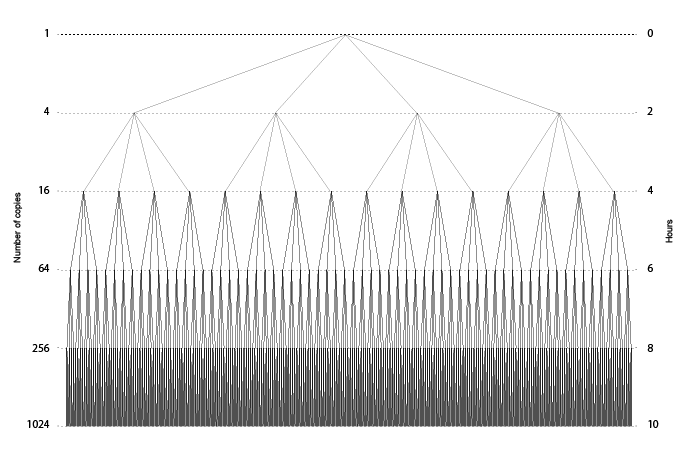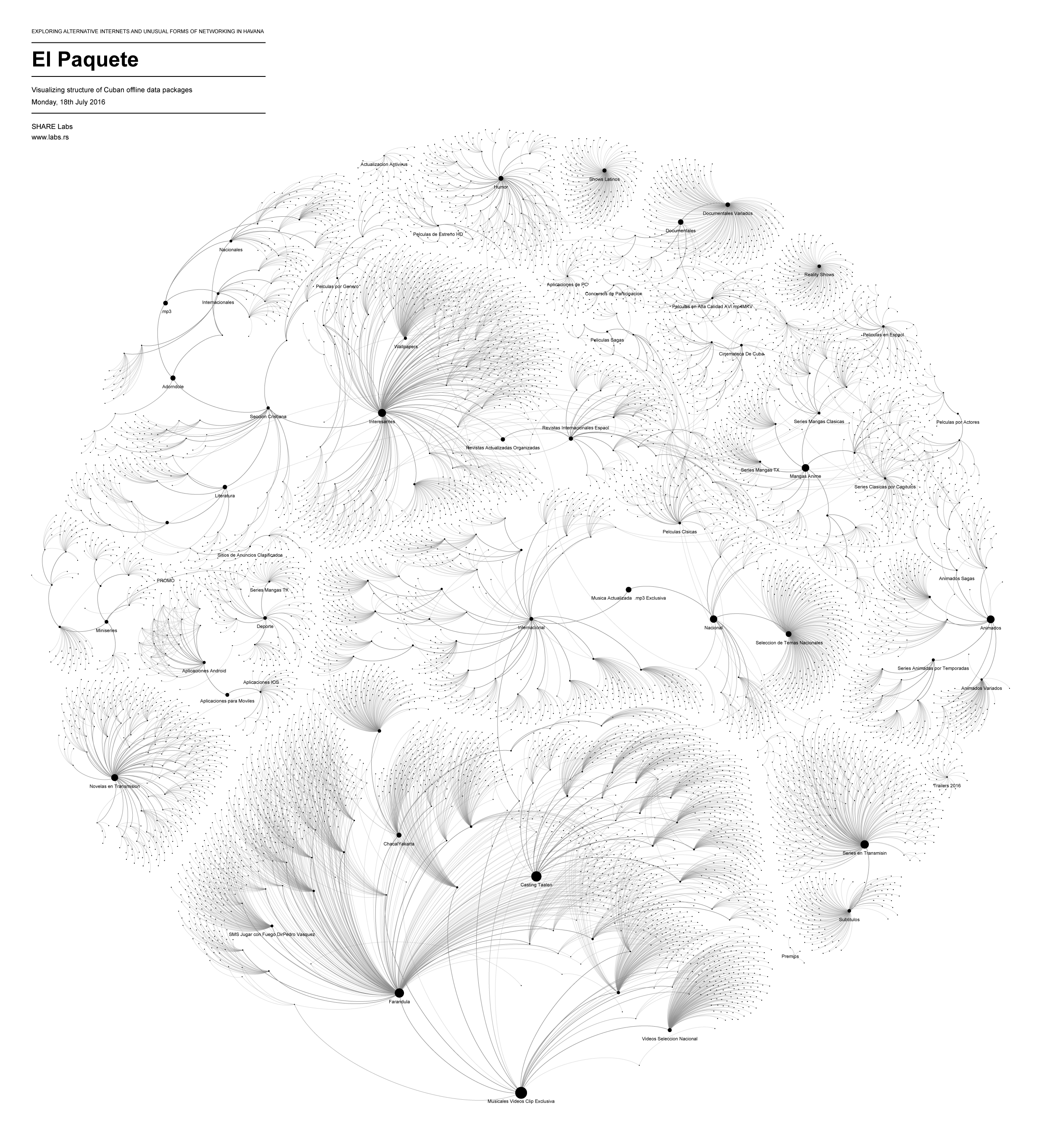
ccording to ITU there are 8,157 fixed Internet broadband connections (0,007%), on 11 million Cuban citizens , mostly reserved for government institutions and extremely privileged individuals. The slightly less privileged individuals in 5,6% of the households are lucky to access a painfully slow, government controlled dial-up Internet connection at a speed of about 4-5 Kbit/s.

In 2015, the state owned ETECSA opened 35 public WiFi spots where Cubans can access Internet for 2 CUC (around 2 USD) per hour which amounts to approximately 10% of their average 17 USD a month income (the average income of people who work for the state, i.e. majority of the population). In theory, if regular a Cuban citizen is lucky enough to live near some of those WiFi spots and get the strange idea to be connected for a full month to the Internet, they would need to pay 1.440 CUC, or almost 50 times more than for example citizens of Bucharest in Romania are paying for 25 Mbits/s . They would need to work for approximately 6 years for a single month of not that fast, WiFi Internet access.
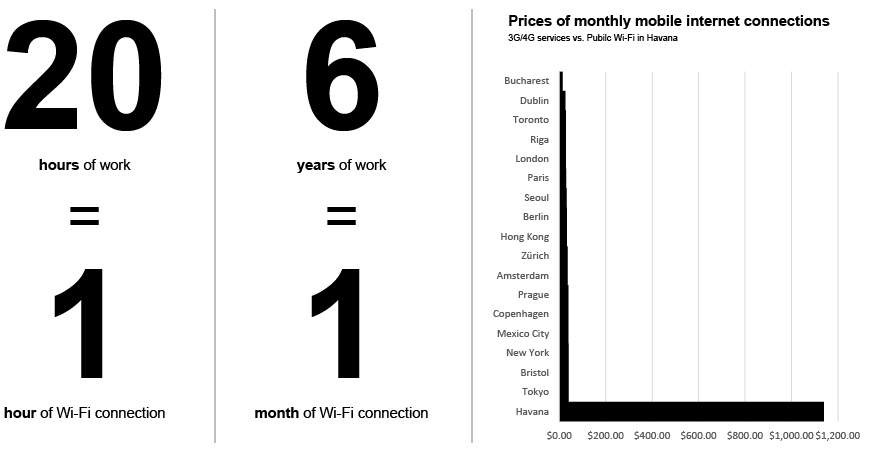
We can speculate that this is probably not an example of the best socialist practice done by a government owned monopoly in a communist country, but this is not the topic of this story.
We are interested in alternative forms of networking and content distribution, appearing at the edges of the centralised and government run infrastructures, sometimes disconnected from it and functioning as an entirely independent “service”, and sometimes exploiting any possible way to appropriate and take control over the scattered resources.
In 3 short stories we will explore how one isolated society manages to override this gap and establish alternative ways to access, distribute, share and enjoy digital content.

Screenshot from Call of Duty: Black Ops, located in Havana, Cuba ( Source : Call of Duty Wiki )
United Nano Nations
Mr.X, in his mid-twenties, is a passionate Battlefield gamer and administrator of Los Pir@t@s sub-nodesituated in one of the not so wealthy neighborhoods of Havana. His computer is connected to the other six houses in the neighborhood using long UTP cables, that go through holes drilled in the walls, and stretched over the roofs, backyards and nearby streets.
On the roof of the nearby building he installed a WiFi nano-station allowing other houses, outside of the 100m reach of UTP cables, to join his local network using different types of DIY or brand made WiFi devices. All of them together form one local network of around 20 connected households, empowered to share, communicate and mostly play games together.

This small neighborhood network is connected to much bigger network nodes. One kilometer to the north in the blocks of tall residential buildings in the area called Nuevo Vedado there is a much bigger network structure.
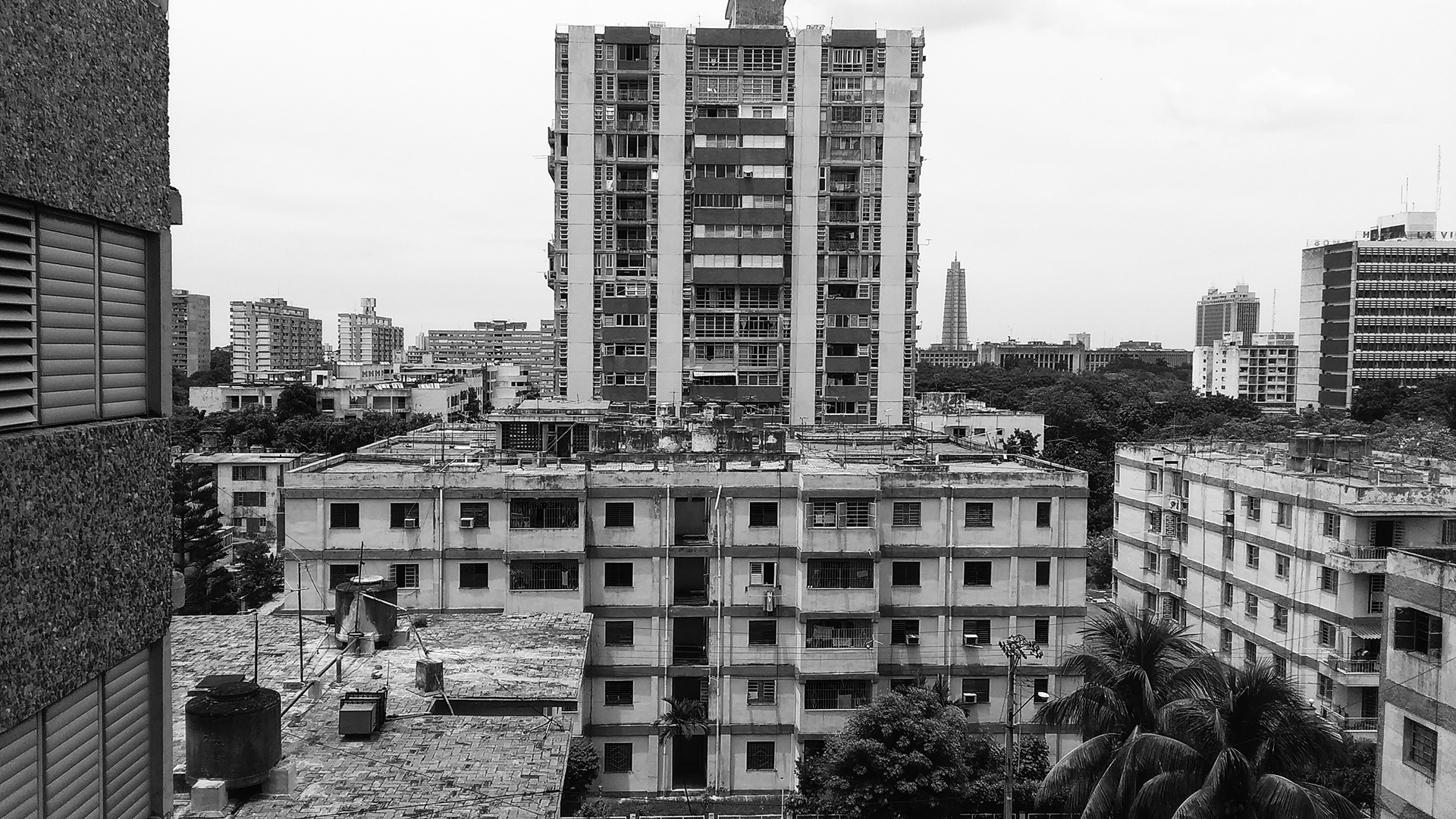
Nuevo Vedado buildings
This part of the city, characteristic for the blocks of the socialist Yugoslav style of architecture, hide one of the most dense neighborhood networks. Within the ventilation holes of the buildings, there are kilometers of UTP cables, and the roofs of those buildings are the perfect spots for the network of nano stations.
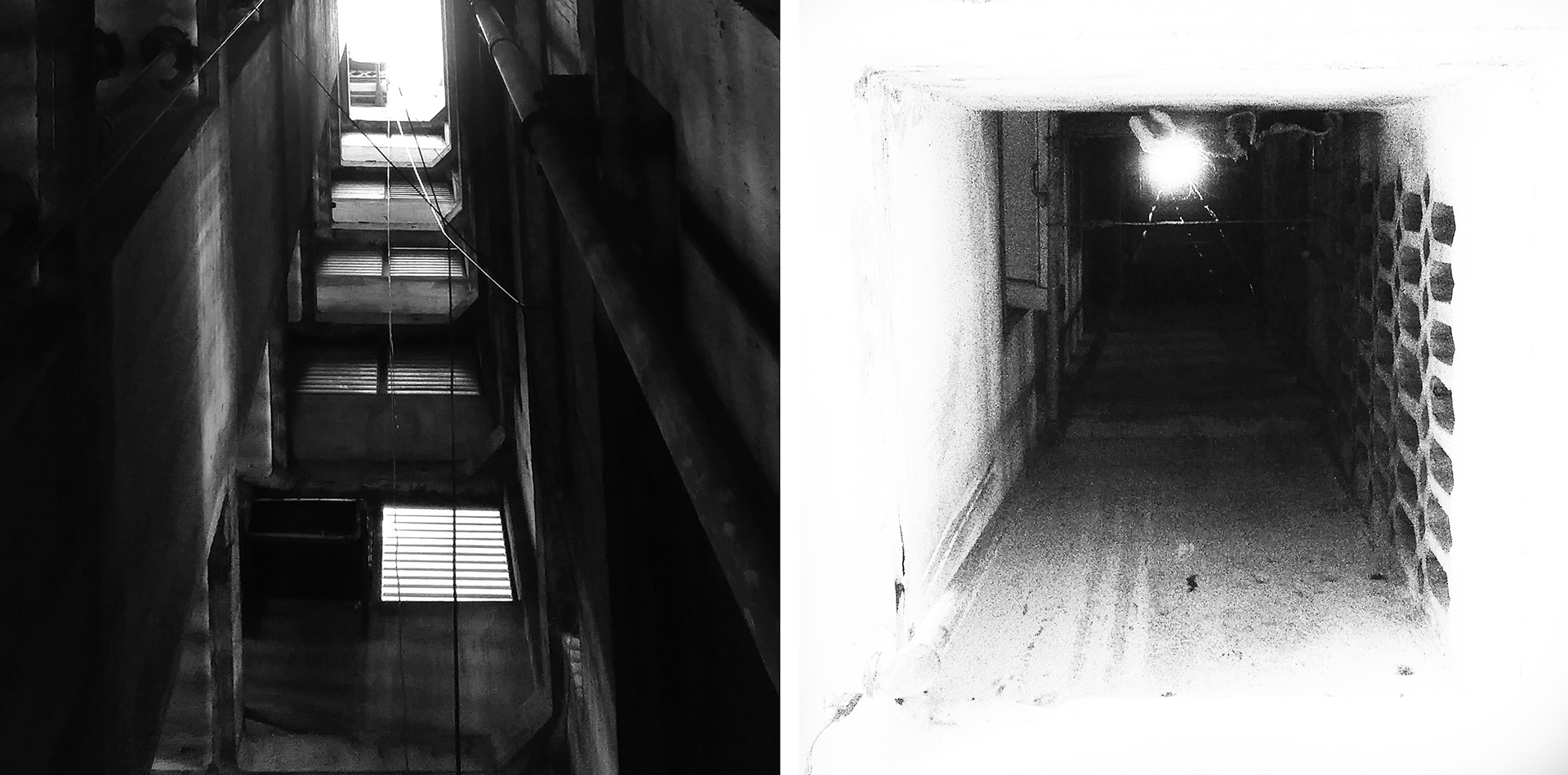
Ventilation holes of Nuevo Vedado buildings
As you can guess, this network is then connected to another huge network node. This one is at the district of Havana called Cerro, and it has more than 2000 interconnected households.
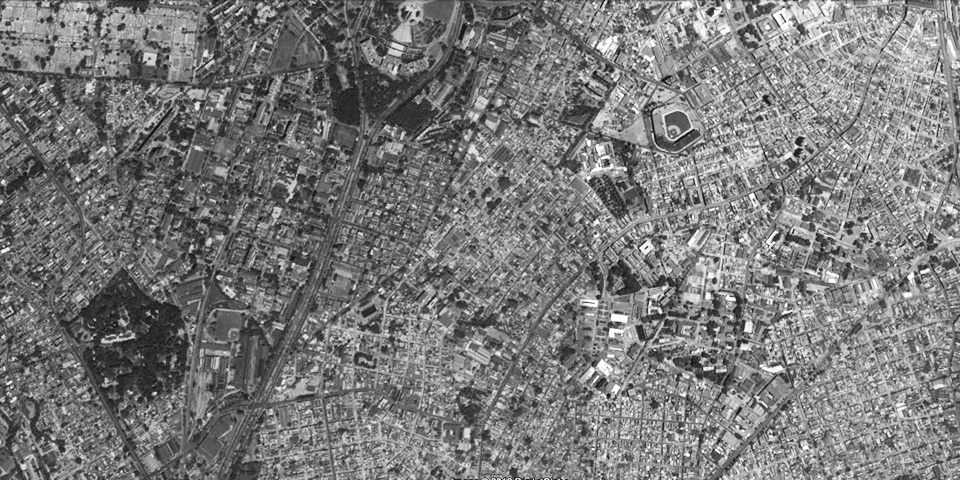 Satellite picture of Cerro, Havana ( Source : Google Earth )
Satellite picture of Cerro, Havana ( Source : Google Earth )
In each city district of Havana, there is a network of connected computers, servers, nano-stations and all together they are forming one huge city wide network with approximately 12.000 connected households – SNet (Street NetWork).
Stretching over almost 30km From Santa Fe on the west of the city to the edges of Alamar on the east, and 20 km from Malecon on the north to Cotorro on the south there is a hidden network of cables, nano-stations and repeaters completely independent, outside of government, state-run or private enterprise hands, that belongs to no one but to the people, end-nodes that form this impressive network structure.
Such a networks don’t exist only in Havana but in most provinces of the island. The second biggest one is in Matanzas with around 2000 connected households. The networks are not connected between each other. They exist as some kind of isolated islands of networks. Not connected to one another but also not connected to the outside world, to the Internet.
Hidden safe havens
Every piece of this huge infrastructure belongs only to its users. Every user owns their own piece of this network puzzle, the nanostation, the server or cable. There is no fee for using the bandwidth or the content within the shared folders, which are there for anyone to copy and distribute. There are no paid services and advertising is forbidden. In a world where we forgot how it is to own your own infrastructure, where everything behind the screen belongs to someone else and where we are mostly just consumers, not makers, where we are constantly being profiled, targeted and quantified – those isolated, ad-free, owned by users networks look like some kind of techno utopian safe havens. To be there, somehow reminds of the early days of the Internet. But, as usual there is another side of the medal.
Rules of the game
The existence of this network depends on the invisible, unspoken and subtle dance with the Cuban state. This network should not exist according to the Cuban “reality”. Even though, connecting computers to the network is not forbidden, importing networking equipment to Cuba is.
Since there are no local factories that produce nano stations or other networking equipment in Cuba, the existence of 30km wide independent network of 12.000 connected devices does not fit the picture. Government still has not made any move, and hopefully they will not, but it is highly unlikely that this phenomenon is unnoticed. On the other hand, within network there are strong internal policies regulating any possible discussions about politics, distribution of pornographic content or “anything that can affect the image of SNET or our country (Cuba)”. Those policies also forbid the network to be connected to the Internet and to be used for transmission of any foreign TV or radio program. SNET users know that their precious network can disappear in a day if this network start to be perceived as a ground for “counter-revolutionary” activities. So, self-censorship is deeply embedded in every end-node of this network, and sub-node and node administrators are able to block anyone who doesn’t obey the rules clearly explained in the document “General rules of SNET”.

We can discuss or criticise those internal policies from many different angles, but it is clear that they are the functional defense mechanisms allowing this network to exist in really specific Cuban circumstances. On other hand, we should be clear that the origins of this network are not in some kind of cyber-utopian-freedom-empowering dream – this network is mainly used for multiplayer gaming during the day and sharing movies and software during the night.
Homebrewed Internet
But, it is not just about multiplayer gaming and sharing. Within this network there is small universe of local websites, free services and small social networks made by the network members and visible just to them. The network has its own search engine – Look.me, a social network – Facebokito and even their own version of Ebay called Timbirichy.
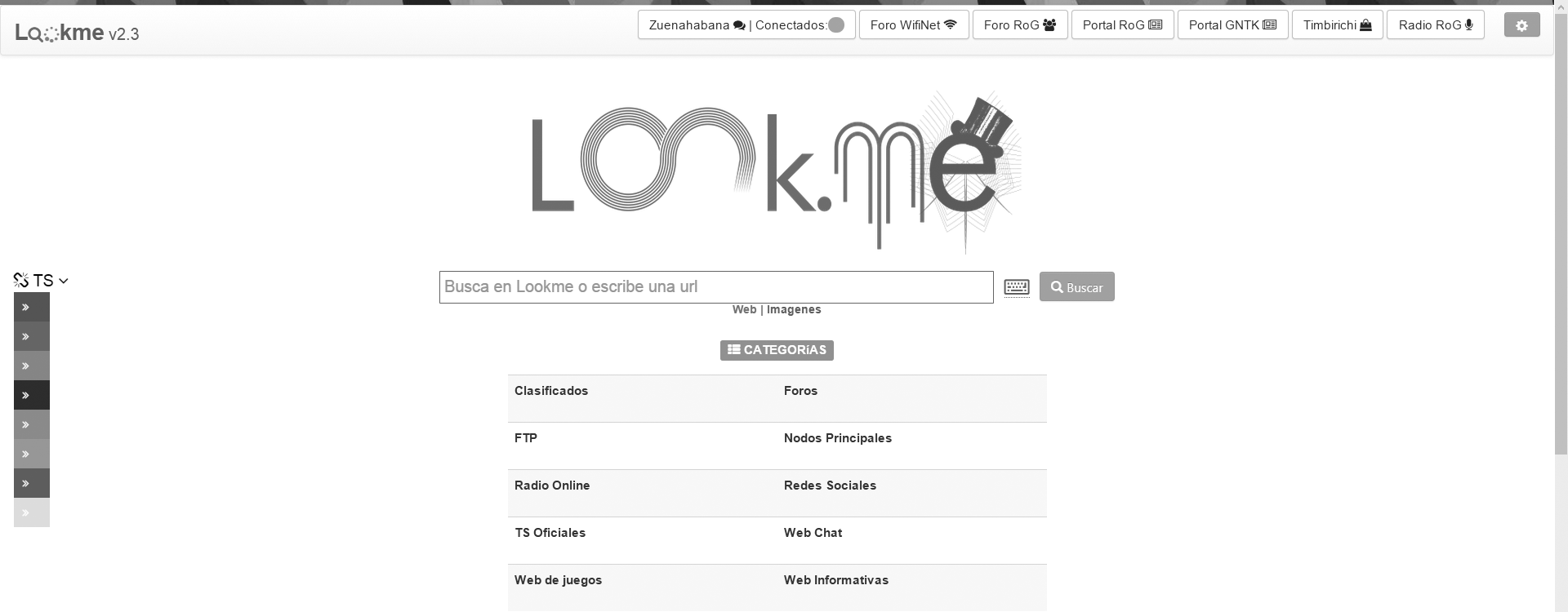
You can find “offline” version of Wikipedia or regularly updated Revolico, biggest and most important Cuban online auction and shopping website that exist primary on the “real” Internet, but that is also replicated both on SNET and on El Paquete. Most nodes, city districts have their own news sites, forums and blogs and there are numerous dedicated servers for gaming.
In this little Internet there are no domain names, just local IP addresses that are assigned to each user, probably by their own local reincarnated version of Jon Postel, when they get initiated into the SNET society and learn by heart the “General rules of SNET”.
Away From Keyboard
Sometimes, this community get together ”away from keyboard” in form of gatherings in public places. In one of the recent occasions, followed by a single post on the network message board, few thousands people gathered on Malecon, famous waterfront walkway in Havana. It was hard to explain to the police that all of those young people did not gather for a political protest, but to discuss in person about computer games and new versions of hardware.
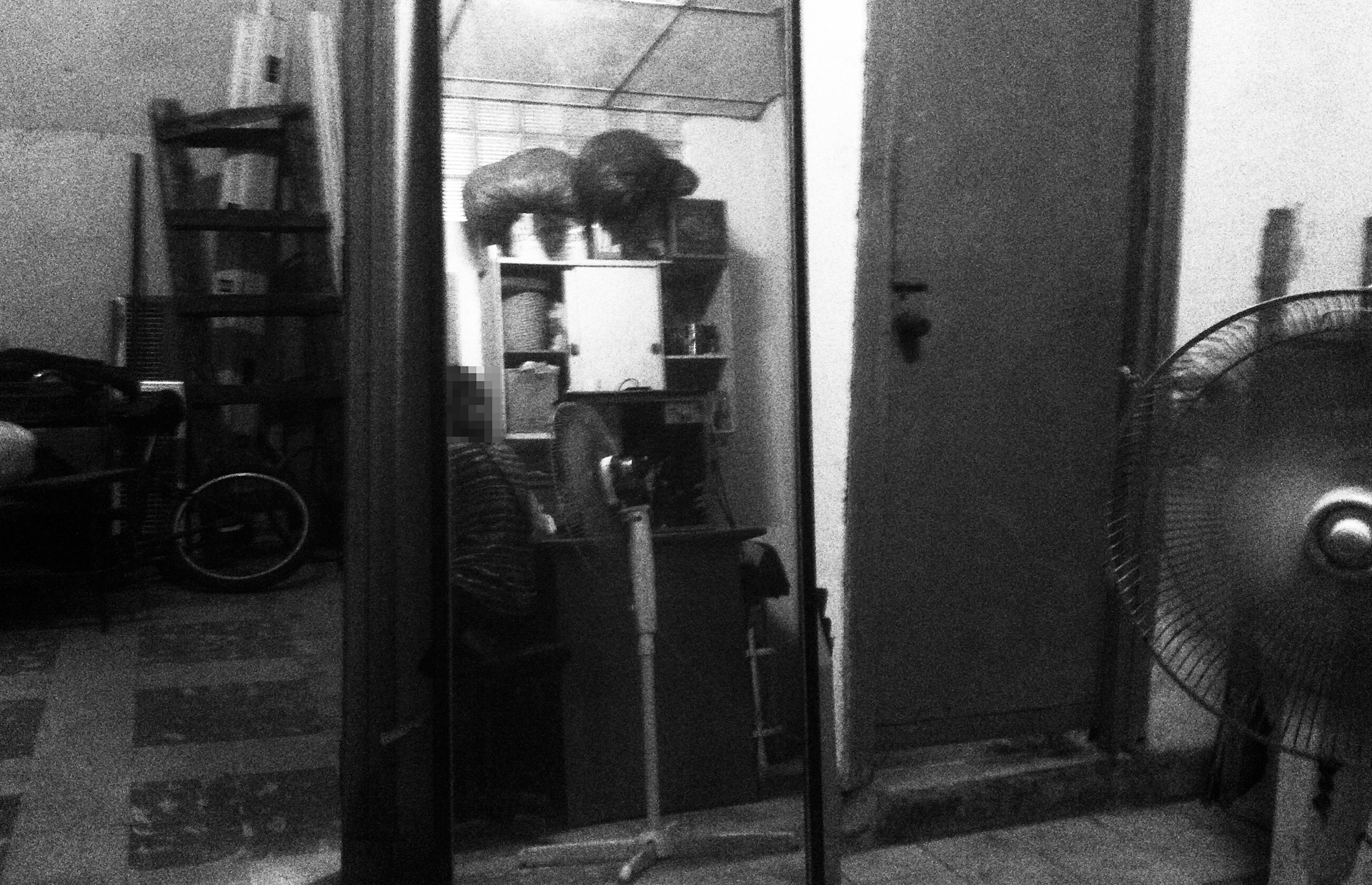
One Paquete to rule them all
The computer in the middle of this photo, contains the content that for the next week will be one of the dominant Cuban version of the offline Internet. The thing is called El Paquete and it is 1 Terabyte of content distributed to probably hundreds of thousands Cubans across the entire island. Every Monday morning, from this little room in Havana, this package of movies, tv series and shows, magazines, webpages, software and books is distributed by a decentralised network consisted of humans, bicycles, cars from the 50s, external hard drives and USB sticks, stretched across the island.
The scale of this phenomenon is so big that El Paquete is the topic of many meetings at the Ministry of culture in Cuba and is being pictured as a treat to the mind of the Cuban citizens exposing them to foreign content. El paquete also has sort of self-censorship policy related to any political or explicit sexual content, still such an independent distribution of content, without government control and influence and economic interest is something that is probably not acceptable for a system that is not so favorable of free flow of information, in a country with extremely limited access to Internet.
El Paquete is not just a distribution network, it is also a form of unofficial economy supporting probably hundreds of families across the island. In almost every neighborhood there is a place, usually in some small room or garage where you can bring your hard drive and copy, for a price, your portion of the El Paquete. The price of a full El Paquete copy is 2 CUC (approximately equal to 2 USD). Usually those places also are legalised shops for ”pirate” DVDs, a type of small business that is allowed for Cubans to run according to the government lists of the new 181 official job types introduced in 2011.
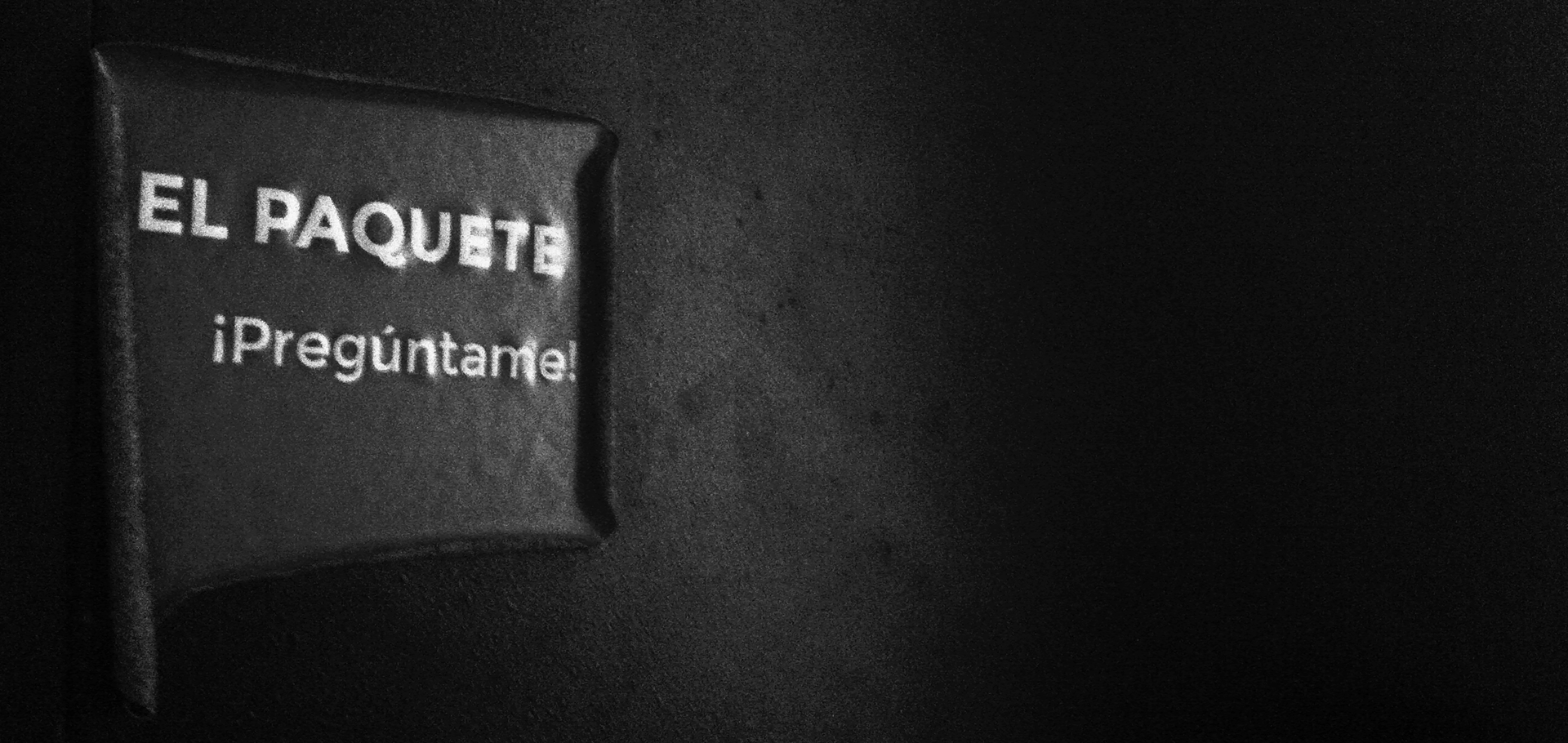
Space and Time
During the years, the size of this ultimate source of digital content for Cubans was influenced by few factors, mostly related to the availability and price of USB sticks and external hard drives on the really unpredictable Cuban hardware black market.

Before the USB3 standard arrived, copying 1 Terabyte of data approximately took 12 hours per copy and that was the biggest limitation that El Paquete had at the very beginning, forcing them to create smaller packages, with lower video quality content. With the USB3 standard being more spread among the nodes in this distribution network, the size of El Paquete was able to grow to one Terabyte and 2-3 hours’ time needed per copy. Still, this is a considerable amount of time for every iteration; in this case we speak about exponentially growing network tree. Just as a theoretical model, if every person, i.e. node in this network was able to simultaneously create, using a USB switch and 4 attached hard drives, 4 copies of the initial package after 2 hours there would be 4 copies, after 4 hours 16 copies, and after 10 hours number of copies would grow to 1024 .
This is, of course, just a mathematical model used as an illustration of the power of such a distribution model and in reality there are many different factors influencing the real dynamics of this complex network of people, hardware and means of transportation.
Anyway, from around a 4 am on Monday, when the first bicycles start to carry the hard drives to the first distribution nodes, until the same day in the evening hundreds and hundreds of data dealers, copy centers, tech enthusiast communities in Havana have their copy of the new episode of Game of Thrones aired yesternight on HBO, updates for the software they use, or a new issue of Cosmopolitan on their hard drives. In some neighborhoods there is even some form of “on demand” service, where content, hard drive with El Paquete, can be brought to your home, so you can copy it on your hard drive.
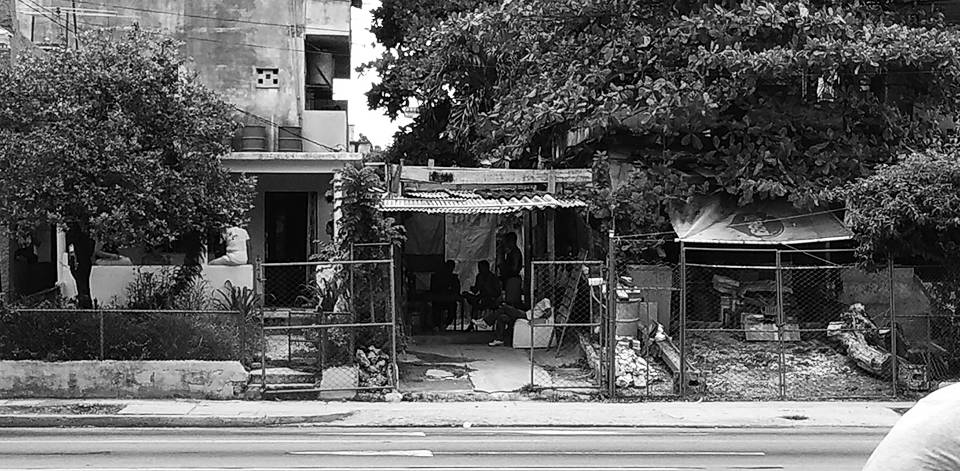 “DATA CENTER” IN VEDADO
“DATA CENTER” IN VEDADO
From end to end of the island
The fact that this independent underground network covers the entire island from Santiago de Cuba at the far east to Pinar del Rio on the west is a remarkable aspect of this phenomenon. Whoever tried to travel from Havana to Santiago de Cuba by a 50 years old old-timer car or pimped Russian Lada on the one and only Cuban “highway” built in the 50s that suddenly ends halfway through – knows that this is an adventure of a sort. Still, hard disks with El Paquete travel in various directions from town to town, reaching hundreds of neighborhoods on weekly basis. This unique Cuban “human-electronic highway” has quite a lagging time. If the citizens of Havana enjoy the latest episode of their favourite dorama (South Korean telenovela) every Monday, the citizens of Santiago de Cuba, around 800km east from Havana, will be able to do that on Wednesday, 2 days later. According to that we can estimate that the speed of this hand to hand, drive to drive, computer to computer network is approximately 16.6 km/h.
Power of Node, economy, and changing structure of the El Paquete
All Nodes are equal, except some of them are higher in hierarchy than others. The structure of this network has its own vertical hierarchy. Everything starts from one point and then grows in different branches until this human-transportation-hardware-information network covers the entire island. But, the creators of the initial package have a reason not to feel as if they own it. Every branch or cell in this content distribution ecosystem, is free to add and remove content and the creators of the initial packet or any other node on the way don’t have any control what happens after them.
The nodes that are higher, or we can say closer to the center of distribution chain, that have a lot of distributions beneath them can try to develop their own micro-economies within their branches and try to for example develop their own advertising deals to it. At the end, private, local based micro business around Cuba rarely have the capacity to sell their products or services on national level, so it makes perfect sense to advertise just inside the El Paquete on the level of a city or even of a single neighborhood.
Another interesting point is that because of the time that is needed for each copy of El Paquete (approximately 2 hours per copy), no one is basically in position to earn much more than others. Time in this sense is a factor that somehow creates equality in this system. As one of the owners of the little center, with a collection of 50 TB of pirated games in Vedado noticed, El Paquete is there on Monday morning for everyone. What will you do with it is your choice, you can try to make something out of it until next Monday, you can develop your little economy just on one segment of it (games or software for example), or you can do nothing. Everyone has the same, equal opportunity for the same price.

An interesting detail is that the price of El Paquete is changing depending on day of the week. On Mondays just after it is released the price is highest (2 CUC), and until the end of the week, after it has been copied numerous times the price drops down (1 CUC).
Economy within a packet
There are different forms of advertising and services that have emerged within this system during the years.
If you send an SMS to a certain number, the content of the message will appear in the El Paquete folder “classifieds” in form of a jpeg image that has your massage on one half and some advertisement on the other half. But there are as well interesting forms of the parasitic advertisement embedded directly into the content. For example, local video advertisements attached to the end of a trailer for some Hollywood blockbuster movie, or visual ad for some local photographer specialized for anniversary photos of 15 years old girls, inserted between pages of the digital version of the latest Cosmopolitan magazine.
Life and death of the El Paquete
El Paquete has a quite ephemeral existence. There is a small chance that someone on the island has a full archive of the previous editions of the package. Even the makers of the El Paquete don’t keep previous versions, simply because the cost of the hard drives are too high for an average Cuban to keep those files. It is similar to common TV, or Video on demand. In a period of one week those files are sliding from scarcity to abundance and finally most of them are being deleted at the end of the week to be replaced with new ones. Some of the files continue to exist, the digital content dealers or collectors of for example games or movies, keep the most popular movies, tv shows,or games and resell it with a price tag per episode or full film.
Feedback mechanism
As every proper cybernetic system, this one has a feedback imbedded as a one of the important parts of it. End distribution nodes can send emails to El Paquete and suggest content that end users have requested. According to the inputs, the content changes, new tv series, collections or type of movies are added and El Paquete evolves according to the needs and inputs of its users. According to one of the El Paquete makers, the amount of emails they receive is huge and they are not able to respond to all the requests, but still this interaction represent an important segment of this complex distribution system.
Origins of Cuban shearing culture
The young adults that create and curate El Paquete are in their late 20s, a generation that transitioned through different forms of content distribution periods on the island. From the VHS banks at the end of the 90s to offline peer to peer exchanges of content on internal hard drives in the early 2000s . Disconnecting your internal hard drive and going to your friend to copy his collection, was the most common content distribution practice in the last 10 years before El Paquete and external USB hard drives appeared. Content was scatter and you relied just on your friends’ taste and ability of storing content. Internet was even more inaccessible back then, just few universities and institutions had the privilege to access a really slow Internet. Content came mostly from University networks administrators that were downloading online content during the night and spreading it very fast in the next few days. The content was curated and chosen by this privileged individuals with access and was mainly movies, series and manga cartoons categorised by genres, there was no attempt or interest in getting bad TV content or tv novellas, the public was young and the demands were different.
Content of El Paquete
Internet dealers : Hot, slow and dark spots of Havana
If you are walking on the streets of Havana and see a group of people standing in the corner and staring at their smartphones, you probably bumped on some of the 35 famous WiFi hotspots established by the government run ETECSA, the one and only telecommunication company in the country.

Official Wi-Fi hotspot at Fe del Valle in Centro Havana.
Some of the official WiFi places, mostly in public parks around the center of Havana are massive open air cyber party zones. Sometimes there are hundreds of people with their laptop computers and mobile phones trying to send email, check their Facebook account or try to use some VoIP services.
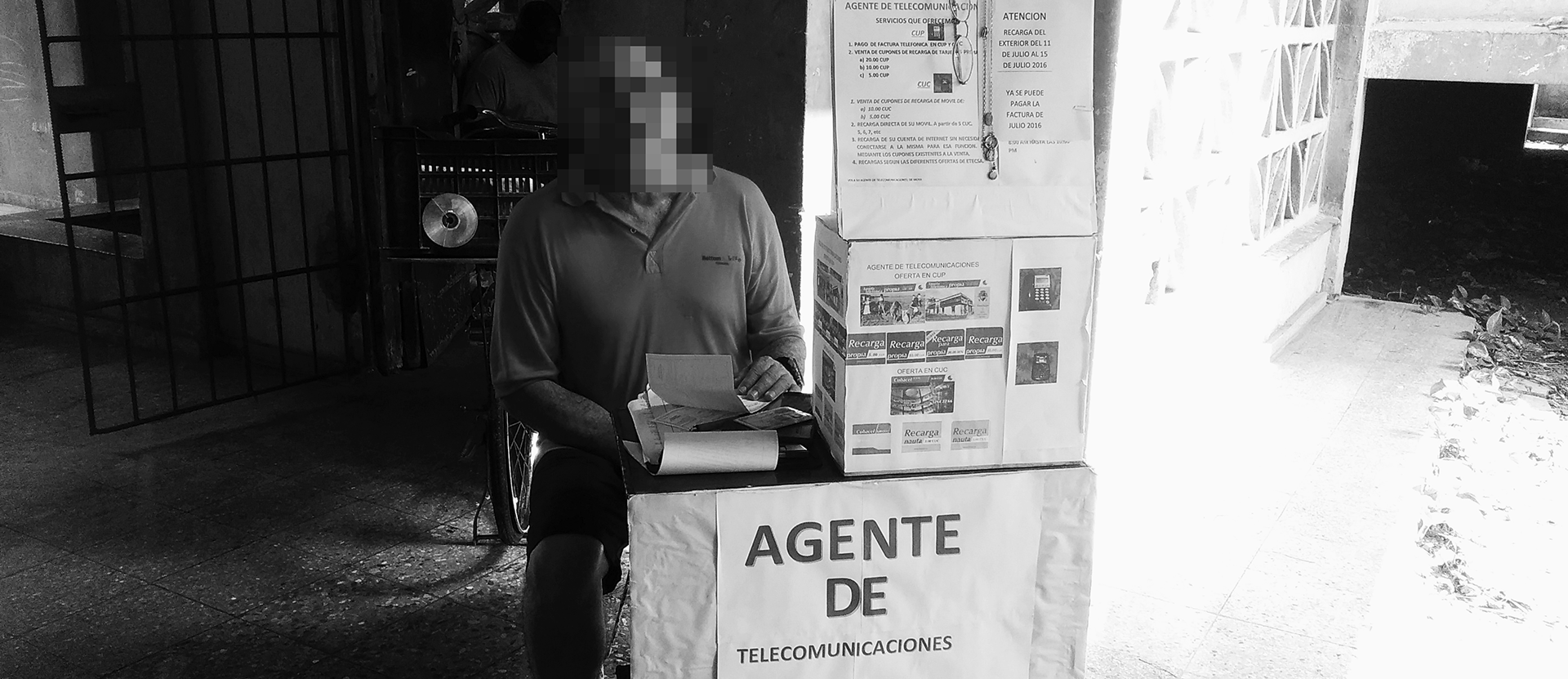
Official ETECSA “telecommunication agent”
In order to use those WiFi spots, an official “telecommunication agent”, that you can find in your neighborhood behind an improvised open air reception desk, needs to register your account, with your real name and ID. Then you can buy WiFi credit, 1 hour for 2 CUCs, that is approximately 10% of the Cuban average monthly salary.
Around most of those official WiFi spots, there are numerous invisible, parasitic infrastructures attached to it exploiting this resource in many creative ways.
As you approach the WiFi zone, you will probably be offered cheaper internet access by some not so official “telecommunication agent”. If you are not directly approached by them you should search for the person who owns the device that creates the pirate hot spot. Sometimes the SSID itself can help you with that. Names of the WiFi networks can be “guywiththegreenshirt” or ”guyunderthetree” for example.
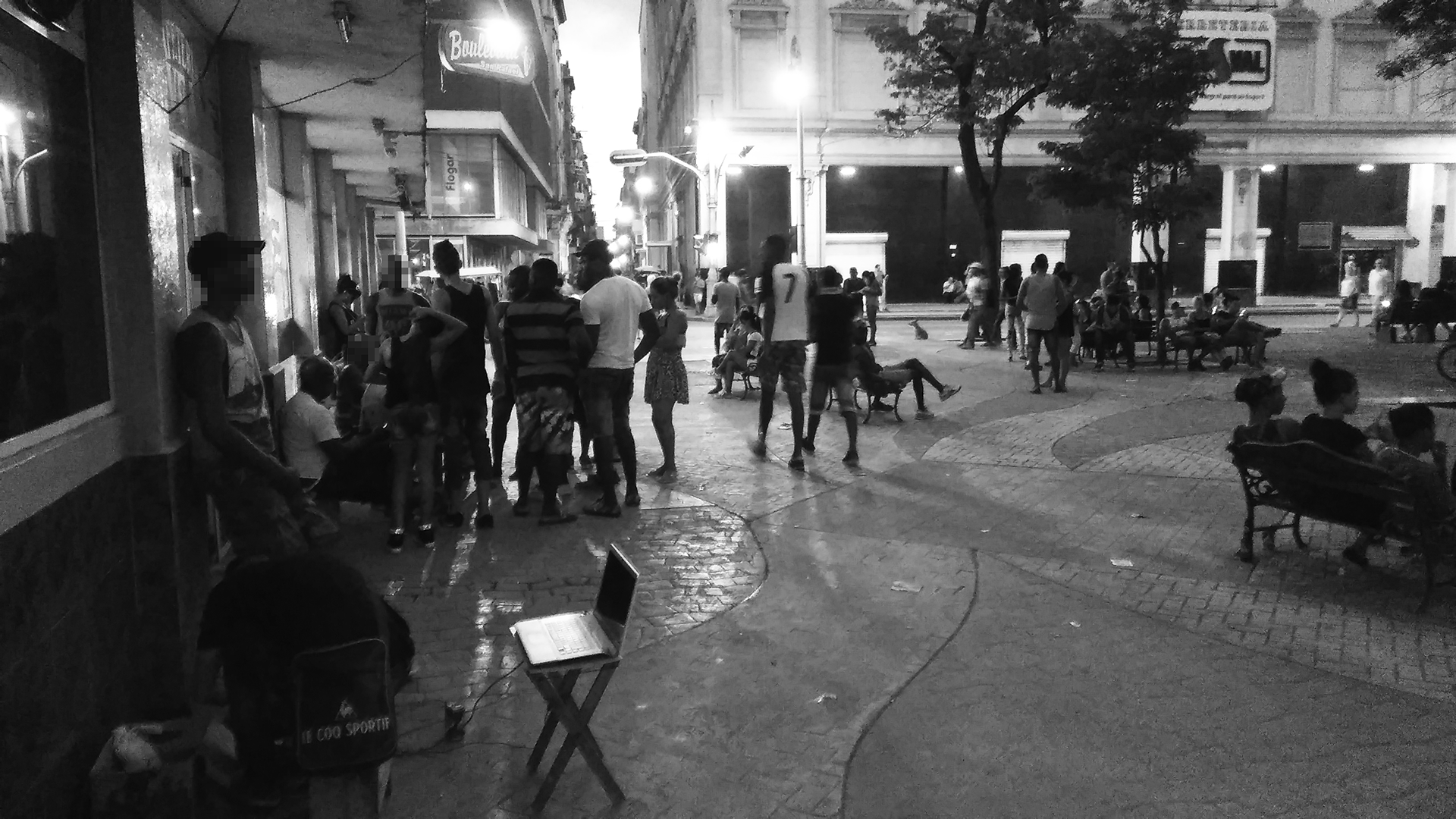 On the edges of the official WiFi zones
On the edges of the official WiFi zones
For one CUC (approximately 1 USD) he will enter the WiFi password in your mobile phone and you will be ready to surf on the most painfully slow internet.
 Nanostation ”in the box” behind trash can
Nanostation ”in the box” behind trash can
Pirate pop-up WiFi zones
But sometimes those pirate WiFi zones appear on the places way out of the official WiFi zones. We bumped into one near to Malecon in Centro Habana.
 Buying Internet access from unofficial “agent of communication”
Buying Internet access from unofficial “agent of communication”
In matter of minutes this guy was surrounded by few dozens of people, surfing on a hotspot and earning few Cuban average monthly salaries in one hour.
 Unofficial popup hotspot
Unofficial popup hotspot
Those unofficial popup hotspots are some kind of ephemeral street cyber cafes, places for meetings and socialising for the community where people have not only established Internet connection but meet and exchange files and content between each other, locally. There are many invisible activities happening between their devices, without accessing the Internet. To enter this local, off the net, communication they use a Chinese made application Zapya, that allows users to exchange files and have a group chat locally without WiFi connection. Sometimes people do just that, go there, chat with people, exchange files for free and don’t use Internet connection at all. It is important to add that mobile phones, which have been restricted to Cubans working for foreign companies and government officials, were legalised just 8 years ago in 2008.
Parasite networks
The risk that the person who sells the connection takes, is that someone else, buys Internet access from him for 1 CUC and then share, re-sell the same connection to other people with his own hotspot for the same or lower price. This is exactly what the first guy does to someone else after all. The guy is probably using his own do-it-yourself infrastructure made of nano stations and repeaters to aim and connect to some hotel or official WiFi zone where he pays 2 CUCs for an hour, pretending to be a regular user. Then he shares this connection with for example 20 people at his street corner with high probability that he will probably be misused by someone else in the same way on the next corner. It’s a form of parasite fractal network, networks within networks, defragmenting into little pieces until the last byte of connection is sucked and the last possible peso is charged from someone.

